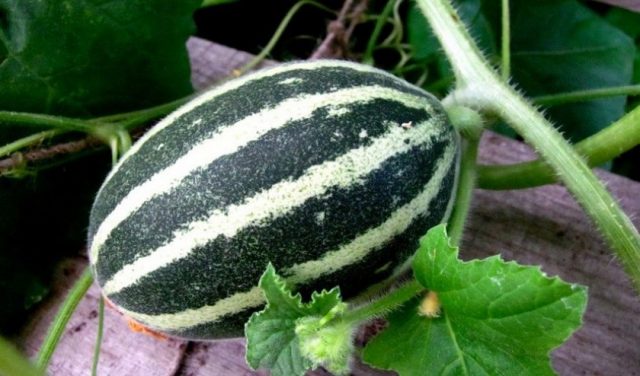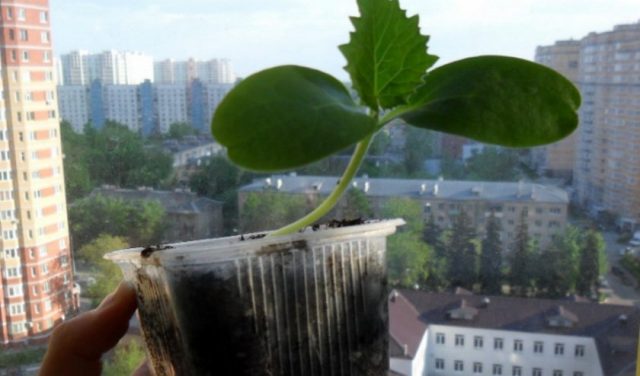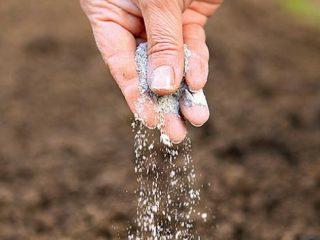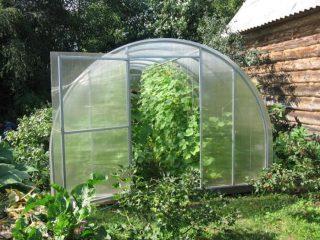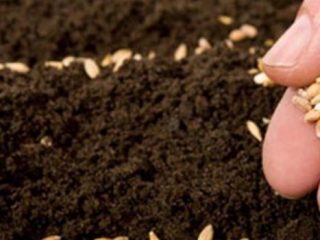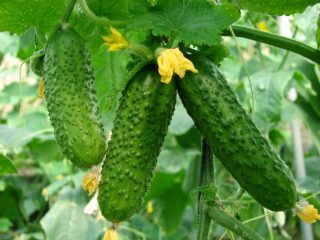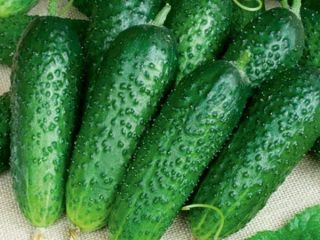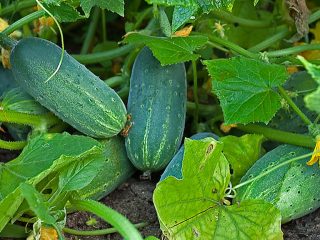Content
Modern agricultural enthusiasts experiment and often grow various hybrids of vegetables. Ogurdynya Larton is an exotic plant that combines the properties of melon and cucumber. This hybrid is quite unpretentious. Ogurdynia is easy to grow.
Description of gherdina Larton
Despite the fact that Larton gourd not so long ago appeared on personal plots, she fell in love with many summer residents. The hybrid is increasingly seen among common vegetable plants. Its appearance combines the characteristics of its ancestors.
Ogurdynya Larton F1 belongs to the pumpkin family. The plant is about 2 meters high and has fairly strong stems and many strong lashes. The developed root system is located shallow in the ground. The leaves are large, dark green. The flowers are similar to cucumber, but larger.
The pulp of vegetables is juicy, creamy with a small amount of seeds.
If the vegetable is not ripe, then it has a green slightly pubescent skin, cucumber taste and aroma. And after ripening, the fruit becomes like a watermelon, and tastes like a melon.
Ogurdynya Larton is an early ripening hybrid. The first crop is harvested 45-55 days after planting. Moreover, experienced farmers collect 10-20 fruits from one bush.
Growing gherdon Larton F1
Growing and caring for Larton's cucumber is simple and does not require deep knowledge of agricultural technology. Gardeners say that you need to care for a hybrid in almost the same way as for ordinary cucumbers.
Planting plot and seed preparation
Gourd is grown in a seedling and seedless way. Planting method varies by region. In southern areas, seeds can be planted directly into open ground when it warms up enough. In central and northern areas, it is better to use seedlings and plant them in polycarbonate greenhouses.
In the first ten days of April, seeds are prepared. They are placed in any growth stimulant and kept in solution for the time described in the instructions. Then, for further germination, cotton material is put in a shallow container, folded in half. Seeds are placed inside and everything is poured with water so that the cloth is slightly moistened. Placed in a plastic bag. Make sure the fabric is constantly damp.
Sometimes the manufacturer himself performs all the operations to prepare the seeds for planting. Then the summer resident can only place them in the prepared land.
After the sprouts appear, each seed is placed in a separate container filled with fertilized soil. The pots are placed in a warm place. After the emergence of seedlings, watering is carried out as necessary.
For planting cucumbers, a place that is not shaded and windy is chosen.
The soil should be loosened and capable of retaining moisture. The plant requires constant watering.
Caring vegetable growers prepare the place for growing gherdles Larton F1 in the fall. The soil is dug up with humus or compost and fertilized with ammonium nitrate or potassium sulfate. In the spring, all that remains is to remove the weeds and loosen the beds.
Landing rules
Shallow holes are dug in the soil, keeping a distance of about 20-30 cm between them, and watered. Then each seedling, together with a lump of earth, is carefully removed from the pot and placed in the recesses. The roots are covered with humus.
Watering and feeding
Ogurdynya Larton F1 is unpretentious, but she also needs care. This is watering and fertilizing. For active growth and formation of ovaries, the hybrid requires a lot of moisture and nutrients. Therefore, vegetable growers should follow these recommendations:
- Irrigation should be done only with settled warm water.
- During periods when the cucumber is actively growing and many ovaries begin to form, the bushes are watered daily or every other day, but not abundantly. This allows the root system to absorb all moisture that does not stagnate in the ground.
- Reduce watering during fruit ripening. This improves their taste and increases their sugar levels.
- Every 2 weeks, watering cucumbers should be combined with fertilizing with a solution of manure or saltpeter.
After irrigation, the land near the plants must be loosened so that a crust does not form on the beds, and weeds must be removed.
To maintain optimal soil moisture, lay a layer of mulch near each gourd bush.
Formation
To improve the yield of the Larton F1 gourd, pinching of the lashes and removal of excess ovaries is required. The formation of a bush should be carried out taking into account the following rules:
- When the main stem reaches 25 cm, it should be pinched. This will stop growth and stimulate the formation of side shoots.
- The growth of lateral lashes is stopped above the 7th leaf. No more than 3 ovaries are left on each.
- Shoots lying on the soil need to be buried in 2-3 places in the ground so that additional roots are formed.
The formation of a bush, carried out in accordance with all the rules, gives a guarantee of obtaining large fruits in a short time.
Protection against diseases and pests
Ogurdynya Larton F1 is disease resistant. But with high soil moisture and dense plantings, fungal diseases affect it. Flower petals and ovaries rot.
Disease prevention: spraying with fungicides containing copper. Also used "Fitosporin". You can take 15% Bordeaux liquid.
Ogurdynya Larton F1 is not attacked by pests. But when fully ripe, the fruits become fragrant and attract birds. To ensure safety, the beds are covered with a layer of mesh or scarers are installed.
Harvesting
1.5 months after planting, you can already feast on the first fruits of the Larton F1 gourd. At this time, they resemble cucumbers. And you can wait for full ripening and collect already a semblance of a melon. Moreover, vegetables ripen continuously throughout the summer season.
Fruits are stored for 1.5 months in a dark and ventilated place, where the temperature is maintained at + 3-4 ° C.
Conclusion
Ogurdynia Larton is an agricultural crop that an inexperienced summer resident can also grow on his site. You just need to follow all the rules of cultivation, which are similar to the rules for growing cucumbers.
